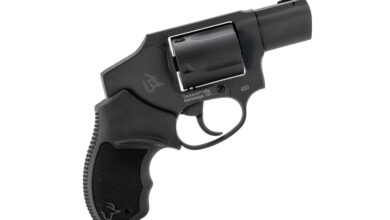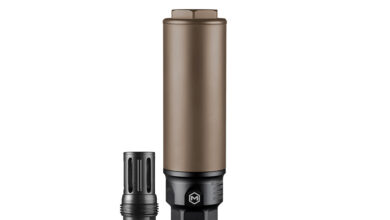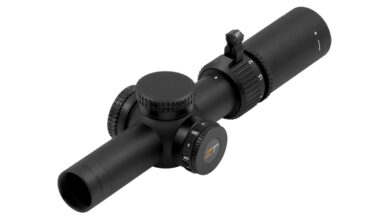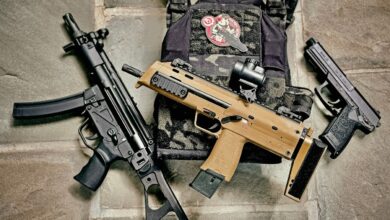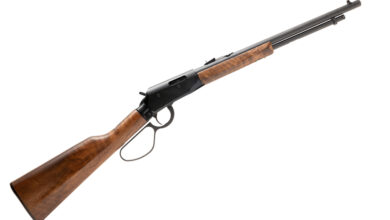The Ruger 10/22: Still The Most Popular Rimfire Rifle
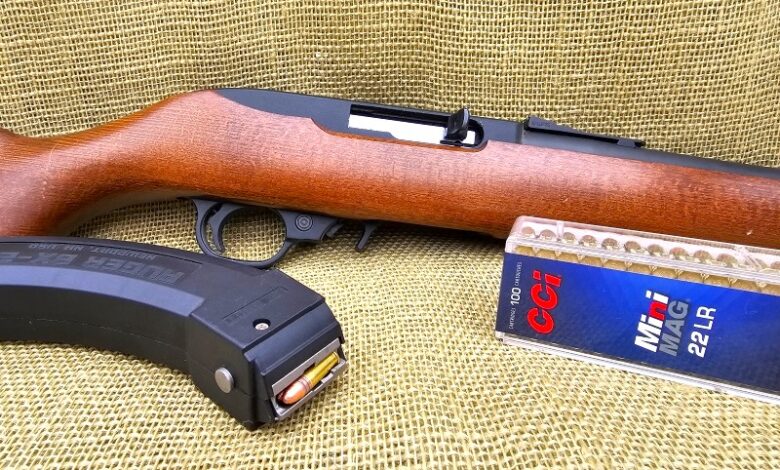
The Ruger 10/22 is easily one of the most popular rimfire rifles ever produced. Over seven million rifles have been produced since its release, which is astounding. It may not have the highest production numbers of any firearm, but it’s pretty far up there. And considering it was introduced in 1964, the fact that its popularity hasn’t waned in 60 years is saying quite a bit. As I type this, I’m just realizing that this is also the Ruger 10/22’s 60th anniversary!
We’ve established that 10/22 is the king of the hill, but let’s examine how it got there and why it remains so.
Tech Specs
First, let’s discuss the technical specifications of the Ruger 10/22. These will be a general guide because Ruger has a veritable smorgasbord of 10/22 models floating around out there. For example, as I was writing this article, I checked Ruger’s website to see how many different variations of the 10/22 they have available. There are 73 of them listed!
The basic action is the same, but there are so many combinations of features that it can blow your mind. There are various stocks, finishes, barrel lengths, barrel weights, and other features. Some are take-down models. Different stock configurations and materials (wood and synthetic) are available, including folding stocks. There are target models: regular ones, lightweight ones, and ones that store better than others. Plain ones, fancy ones, cheaper ones, costlier ones… you get the point.
For this article, though, we’ll just review the specs of the standard, wood-stocked Sporter model and realize that this is a general baseline for what’s out there. Obviously, the specs are going to vary somewhat from model to model.
- Stock: American Walnut.
- Barrel finish: Satin black.
- Barrel Length: 18.5 inches.
- Barrel twist: 1:16 Right Hand.
- Overall length: 37 inches.
- Weight: 5.2 pounds.
- Capacity: 10, 15, 25 rounds.
- Front sight: Gold bead.
- Rear sight: Adjustable (buckhorn type).
The barrel is cold hammer forged, which is great for longevity and accuracy. We’ll get into accuracy a bit more in-depth later on. Ruger includes a scope base rail for those who wish to mount a scope.
There is a cross-bolt safety in front of the trigger guard that is very straightforward and standard, which works well. I have experience with a few models, including the Sporter with a black, synthetic stock. It is also the same model but has a stainless finish to prevent rust. There’s even a Compact one with a 16.12-inch barrel and walnut stock, which I really love — it’s so satisfyingly compact! I don’t have one, but there’s a pistol version (the Charger) that I hear is an incredibly fun gun to shoot.
Some Reasons For Popularity
A book could be written about why 10/22 is so popular. Sadly, I don’t have that much space here, but I’ll cover some of the high points.
When the gun was introduced in the mid-1960s, the fact that the 10/22 somewhat resembled the M1 Carbine was probably a major selling point, given the number of veterans who had used the M1 in the service and who had a soft spot for it. As a matter of fact, Ruger currently has a version of the 10/22 that has a stock that looks almost exactly like that of an M1 Carbine. So, the wholesome appearance of the 10/22 and its resemblance to a favorite service rifle undoubtedly played a role in its favor.
Word quickly spread about the rifle’s reliability, which also helped increase the 10/22’s popularity.
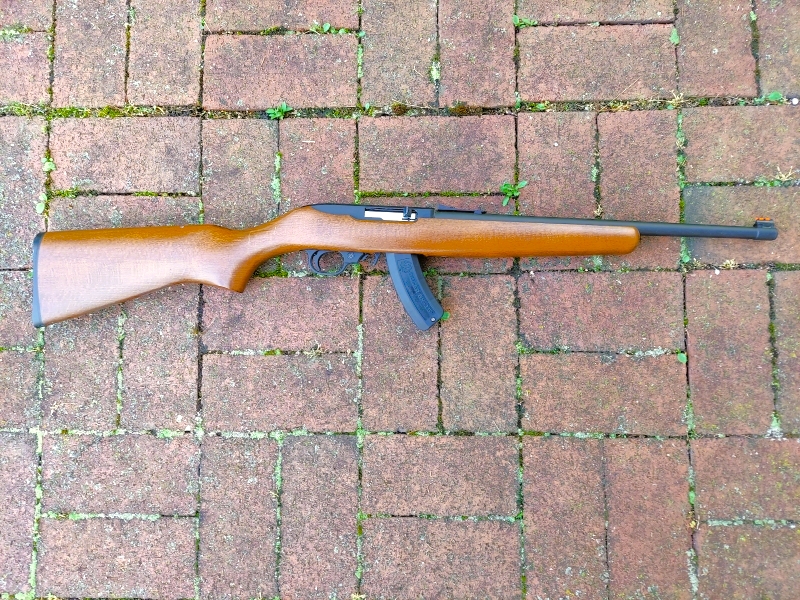
It’s a light rifle, weighing just over five pounds. Personally, I like light rifles, and the 10/22 does not disappoint. It’s also a compact rifle, so it’s easy to carry and maneuver and doesn’t tend to get in the way. It also stores fairly well for those who like to throw it behind the truck seat or stow it in another place in the vehicle.
Another plus is that the 10/22 doesn’t look threatening to those who aren’t into guns. It’s a rather plain-Jane-looking rifle and is non-threatening in appearance. Most models have a conventional-looking stock. Those with wooden stocks aren’t normally fancy, but they do look attractive enough to impart a sense of pride of ownership.
Typically, 10/22s do not cost a lot. Most of the ones that I see in my local gun shop are around the $300 mark give or take a little. Of course, you can add features and pay more, but if you’re after a base model, you won’t go broke buying one.
Reliability
In my experience, the 10/22 has been amazingly reliable to shoot. Typically, .22 Long Rifle firearms will experience some stoppages merely based on the nature of the ammunition. Rimfire ammo is not the most reliable configuration of ammunition, as it will occasionally suffer a misfire. However, these have been minimal with the 10/22. The design just works, and it works really well. I cannot recall a time when I had a stoppage in any of my 10/22 rifles.
The Caliber
Although the 10/22 has been chambered in a few different calibers (.22WMR and .17HMR), it is most commonly encountered in .22 Long Rifle. And that’s perfectly fine with most people, given the major advantages that the .22LR offers us.
As we know, the .22LR possesses a number of special, attractive attributes that make it popular. First, at present time, the cost is low. Lower, in fact, than any other caliber that we can think of. That means we can afford to shoot for a few hours without going broke. It also means that we can afford to put a significant amount of this ammo away for a rainy day. What’s a rainy day, readers might ask? We’d cite the COVID panic of a few years back when ammunition magically vanished from the shelves of every gun store in the country. During that time, .22LR was one of the most sought-after rounds.
When the next disaster hits (when, not if), make sure you have plenty of .22LR squirreled away so you don’t have to be one of those people paying 500% more than you really should have had to. Buying a few boxes per week can really add up quickly. There’s no reason not to have several thousand rounds of .22 stored away at home to get us through those lean times.
Compact size and light weight are another huge point for the .22LR. A lot of rounds can be stored away in a fairly small area in the home. Or, if we’re taking to the field, it’s easy to throw a few hundred rounds in our pockets or a pack and take it with us. Personally, I’m fond of the offerings from CCI.
The lack of muzzle blast and recoil go a long way in endearing this round to newer shooters; they don’t develop a flinch from the .22 as they would many other more powerful rounds. Good shooting habits can be ingrained before moving on to larger calibers.
In the same vein, shooting a .22 won’t bother close neighbors in the same way that touching off a bigger round, such as the .308 Winchester, might. It’s far quieter, and the sound doesn’t travel as far. This can not only come in handy when seeking good relations with the neighbors, but in a survival situation, we might not want to announce our presence to the entire world, and the .22 helps us remain a bit more on the low-profile side of things.
Finally, as some people grow older, they don’t appreciate recoil and other factors of larger calibers. For them, the .22LR is a great alternative, as it’s tamer in every respect.
Durability
I have a friend who owns one of the first 10/22 rifles to roll off Ruger’s assembly line. Over the years, this rifle has served admirably, and he loves it. A couple of years back, he decided it could use revamping, so he sent it to Ruger to replace some very worn parts. Ruger replaced nearly every component except for the receiver and sent it back to my buddy at no charge!
Yes, you read that correctly: he put tens of thousands of rounds through it (maybe even more than that) over the decades, and they replaced everything that looked worn and did it for free. Can you tell me where else you’d get a deal like that?
Aside from stellar customer service, Ruger is known for one other thing: longevity. Their guns, including the 10/22, tend to hold up over the long haul. For most of us, we’ll never wear one out. Our kids and grandkids will likely be able to enjoy our 10/22 rifles as we pass them down through the generations.
Magazines
After Bill Ruger’s passing, the company became more open to producing larger-capacity magazines for its customers. These magazines elevate the 10/22 to another level of performance.
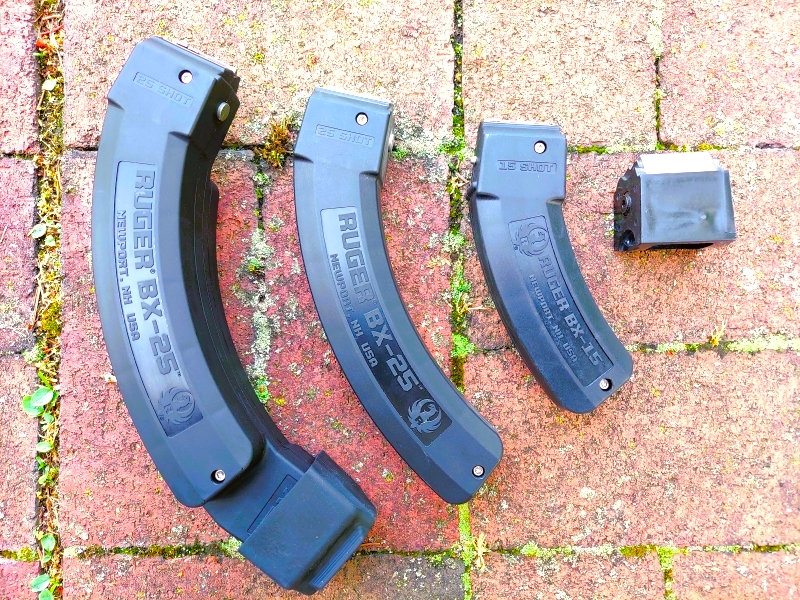
Aside from the original 10-round rotary magazines, which are excellent and seem to last forever, we now have a few other options. There are 15 and 25-round Ruger factory magazines, which allow the 10/22 to function even better as a defensive arm. Yes, I said for defense. No, I’ve not lost my mind because I’ve suggested using a .22 as a defensive arm. With several 25-round magazines handy, one could certainly defend one’s home with the 10/22.
While there are more powerful choices available, consider that the .22, when fired indoors, has far less muzzle blast and noise than other calibers. Imagine touching off a 5.56mm or .308 round indoors; it would “ring your bell,” and that’s putting it mildly.
With 25 rounds on tap, very few home invaders would be able to stand having a magazine of rounds dumped into them. And that’s another point: there’s no muzzle rise, so we can put rounds into the target accurately as fast as we can pull the trigger. While it’s not a powerhouse, several .22 rounds will get an attacker’s attention, especially from a rifle.
Aftermarket Parts/Accessories
There are only a few other firearms in history that are close to having as many aftermarket parts and accessories as Ruger’s 10/22. We can buy just about anything imaginable for the 10/22, from barrels to stocks, triggers, slings, scope mounts, various optics, lights… you name it, and it’s out there.
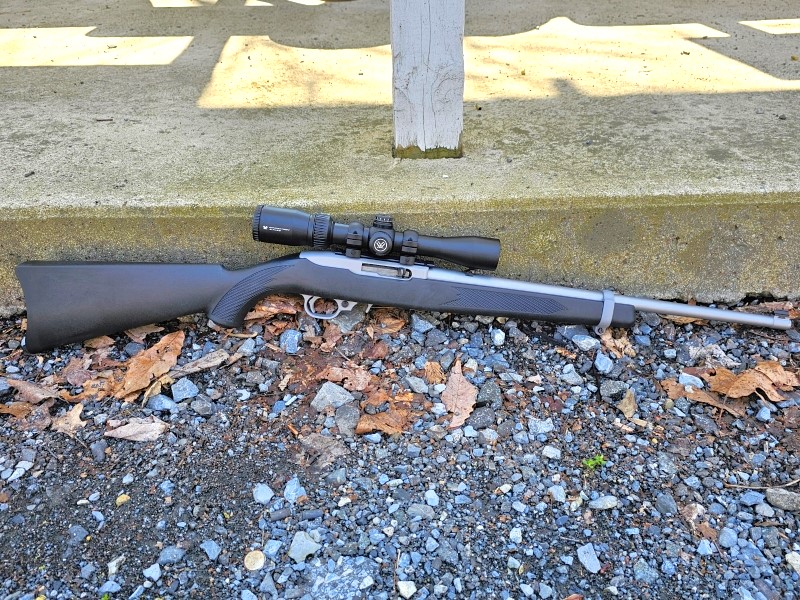
I’ve seen people install heavy target barrels, match triggers, new stocks, and all sorts of goodies, turning the 10/22 into an all-out target rifle with amazing results. This brings us to accuracy.
Accuracy
This is one area where the 10/22 might surprise some people; the rifle is capable of surprising accuracy.
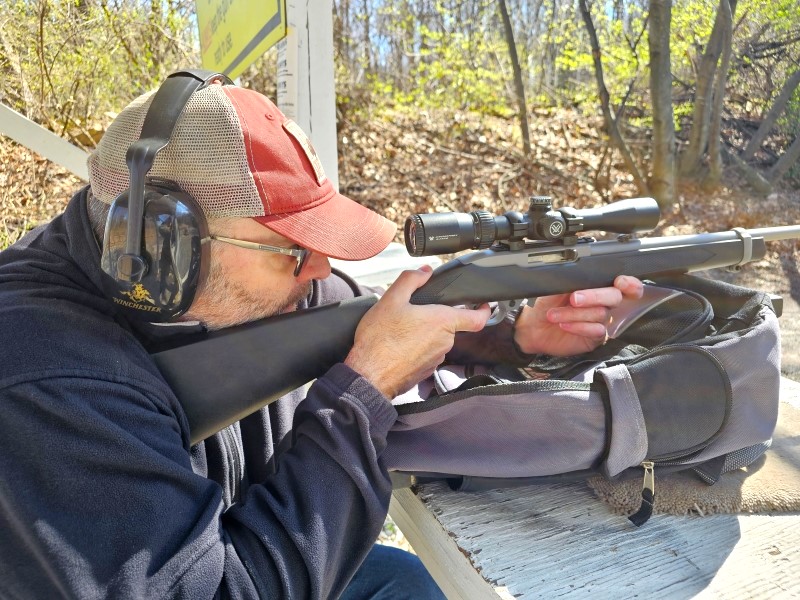
Recently, a friend of mine decided to add a scope to his 10/22 stainless model. He chose a Vortex Crossfire II 2-7x variable power scope. This scope is well suited to the 10/22 platform, as it’s not overly large and offers enough magnification to be effective but not so much as to be overkill.
We recorded several 1/2-inch groups at 50 yards with the 10/22, and that was using run-of-the-mill plinking ammunition. We’ve no doubt that match-grade ammo would yield even better results. The question would then become whether we could shoot up to the rifle’s potential.
Final Thoughts
Now that it has reached its 60-year anniversary, the 10/22 shows absolutely no signs of slowing down. Rather, people are still buying up these rifles at a consistent rate, at least from our observations at gun dealers.
Ruger delivers a reliable, durable, reasonably priced, lightweight, handy, accurate rifle in the 10/22, and people know it. We’re betting it will continue to be popular and sell well into the future.
Plus, the 10/22 is not in current peril of negative legislation, which is an attractive aspect for those living Behind Enemy Lines. Beyond that, if you haven’t yet checked out Ruger’s 10/22, we highly suggest getting to a gun shop as soon as you’re able to grab one. You’ll be glad you did!
The post The Ruger 10/22: Still The Most Popular Rimfire Rifle appeared first on The Mag Life.
Read the full article here

